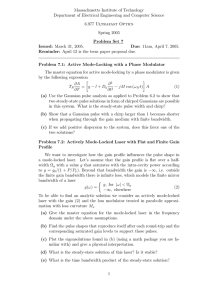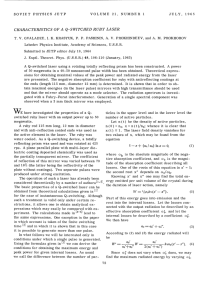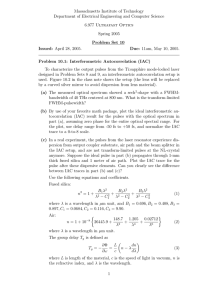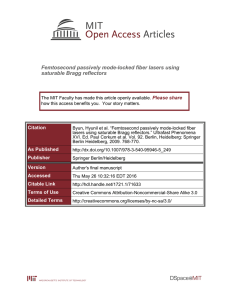OE 450 Assignment #5 Spring Term 2005 Laser Physics
advertisement
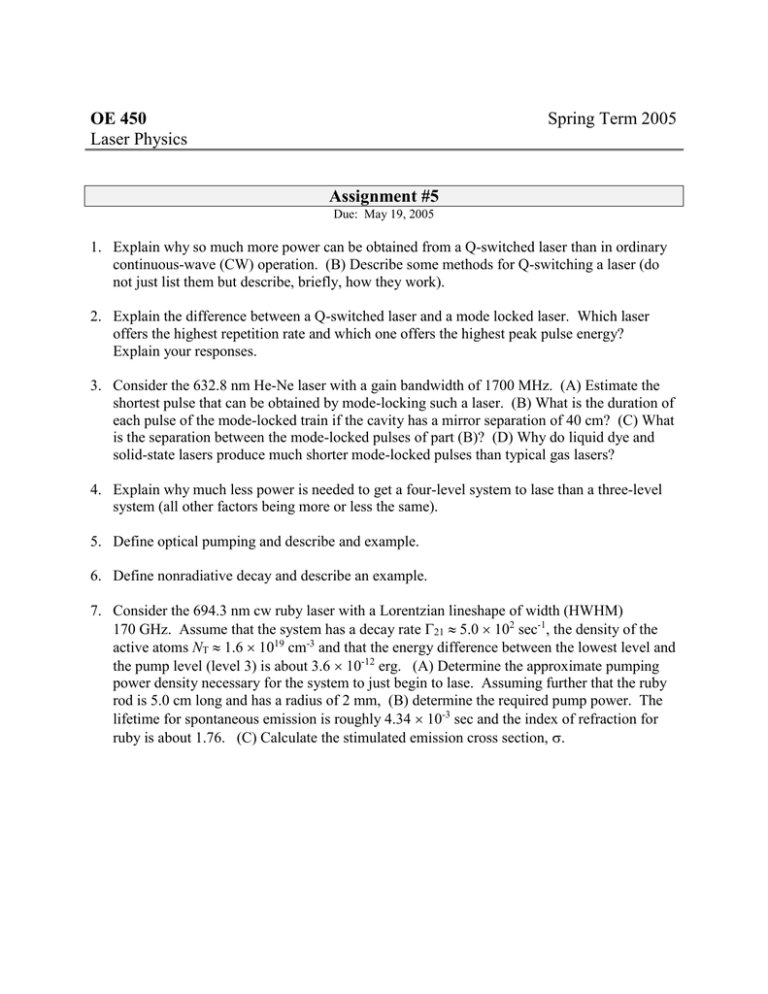
OE 450 Laser Physics Spring Term 2005 Assignment #5 Due: May 19, 2005 1. Explain why so much more power can be obtained from a Q-switched laser than in ordinary continuous-wave (CW) operation. (B) Describe some methods for Q-switching a laser (do not just list them but describe, briefly, how they work). 2. Explain the difference between a Q-switched laser and a mode locked laser. Which laser offers the highest repetition rate and which one offers the highest peak pulse energy? Explain your responses. 3. Consider the 632.8 nm He-Ne laser with a gain bandwidth of 1700 MHz. (A) Estimate the shortest pulse that can be obtained by mode-locking such a laser. (B) What is the duration of each pulse of the mode-locked train if the cavity has a mirror separation of 40 cm? (C) What is the separation between the mode-locked pulses of part (B)? (D) Why do liquid dye and solid-state lasers produce much shorter mode-locked pulses than typical gas lasers? 4. Explain why much less power is needed to get a four-level system to lase than a three-level system (all other factors being more or less the same). 5. Define optical pumping and describe and example. 6. Define nonradiative decay and describe an example. 7. Consider the 694.3 nm cw ruby laser with a Lorentzian lineshape of width (HWHM) 170 GHz. Assume that the system has a decay rate 21 5.0 102 sec-1, the density of the active atoms NT 1.6 1019 cm-3 and that the energy difference between the lowest level and the pump level (level 3) is about 3.6 10-12 erg. (A) Determine the approximate pumping power density necessary for the system to just begin to lase. Assuming further that the ruby rod is 5.0 cm long and has a radius of 2 mm, (B) determine the required pump power. The lifetime for spontaneous emission is roughly 4.34 10-3 sec and the index of refraction for ruby is about 1.76. (C) Calculate the stimulated emission cross section, .







